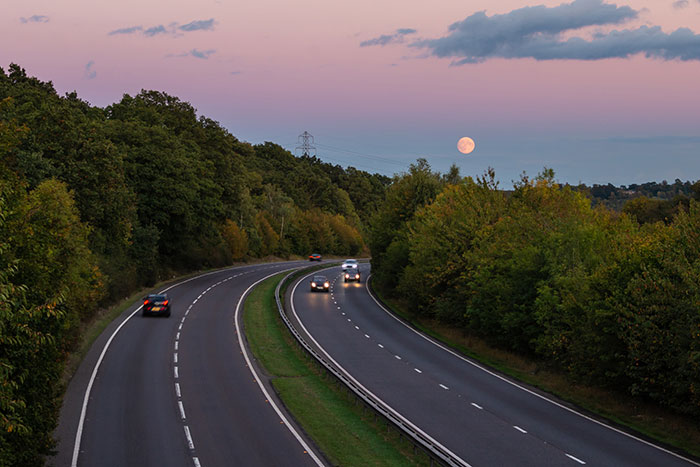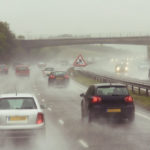
It’s that time of the year where our daily commute is all done in the dark; remember, your headlights will be your lifeline. Here are some tips for driving in the twilight zone.
It is important to make sure you can see and always be seen, so keep all lights working correctly and use them when needed.
Faulty lights are one of the most common reasons for cars failing their MOTs. But we would urge drivers not to leave it until the MOT to check all their lights are working or rely on others to point it out to them.
Lots of cars now have dashboard warning lights to let you know of a bulb failure. However, you should still check your lights manually regularly. If any bulbs need replacing, change them beforehand to reduce the risk of any road incidents. Changing a bulb on a modern car is often a garage-only job, so get it done before the police stop you and issue a ticket or repair notice.
The Darkside of driving
It is incredible how different a road looks at night. Familiar routes can pose extra challenges in the dark, so make sure you are wide awake and looking out for pedestrians and cyclists in the gloom.
The limit of your vision at night is often the limit of your headlight beam, which is where you must be able to stop.
If you’re travelling through a rural area at night, a herd of deer can suddenly cross the road, so those signs warning you of wild animals you’ll have previously passed will abruptly make sense.
 In poor weather, remember that you still need to see things like large pools of water or fallen trees in the dark – so adjust your driving to suit all the conditions combined.
In poor weather, remember that you still need to see things like large pools of water or fallen trees in the dark – so adjust your driving to suit all the conditions combined.
Judging the speed of oncoming vehicles is more demanding in the dark – reduce your speed and watch out for dazzle on dark sections of the motorway.
Squeaky clean windows
Visibility is poor in the dark so clear your outside windows of any ice or mist to help you see what is going on around you, before setting on your journey.
It’s easy to forget the inside of the windows but keeping them clean helps prevent them from misting up.
Please switch it on
Dipped headlights can be used during any time of the day and should be switched on in poor weather conditions.
If you cannot see beyond 100 metres when it’s misty, switch on your fog lights. It’s illegal to drive with fog lights on in clear visibility, so don’t forget to turn them off.
Use your full beam lights only when you’re driving on an unlit road and where there is no vehicle in sight ahead of you. However, when you meet oncoming road users, remember to switch back to your dipped headlights to avoid dazzling other drivers, including pedestrians and cyclists.
If an approaching car forgets to dip its lights, look beyond the lights to their left to avoid being dazzled as much.
Use hazard warning lights when your vehicle is stationary to warn that it is temporarily obstructing traffic. However, please don’t use them while you’re driving or being towed unless you are on a motorway or unrestricted dual carriageway, and you need to warn drivers behind you of a hazard.
Follow the leader, but keep your distance
Use the headlights of the car you are following to show you what is coming up further ahead. Don’t look at the lights themselves, but at what they show.
Reflective road signs and motorway studs will help you drive in poor light and let you know the direction of the road and where there are known problems ahead.
See and be seen is the golden rule for driving in the dark. If you need help fixing the bulbs on your car, my guys will happily help to make your driving safe.
My guys are here to help. Get in touch if you need an MOT, repair, or advice. Call us on 01628 788 880 or book via info@mrtautos.co.uk, message us on Facebook, or find us on NEXTDOOR.

